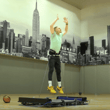As discussed in Speed Workouts, the variables we listed that are involved in running faster are training frequency, training volume, training intensity, and training time. Now, to train for speed and endurance, we will include another variable, the type of running exercise is important in running faster and longer.
Runners also need to include exercises outside of the ‘run’ that help to develop unilateral strength, mobility (ankles, hip and spine), and core strength to improve performance and durability. The ability to run faster and longer without getting injured should be a priority for runners and all athletes when speed training.This article will provide 5 exercises that will help a runner improve strength, stability, coordination & mobility that will ultimately lend itself to running stronger, faster & longer!
5 Running Exercises
1. Single Arm, Single Leg RDL
The glutes play so many roles in activity and sport. In an excerpt from his book, Bodyweight Strength Training Anatomy by Bret Contreras he states that, “The glutes are vital for functional movement. Walking, standing up from a chair, climbing stairs, picking up objects off the floor, and carrying objects across the room all require properly functioning posterior chain musculature. (The spinal erectors, gluteus maximus (glutes), and hamstrings make up the posterior chain.) The gluteus maximus plays a major role in most athletic activities. He continues to add that, “The gluteus maximus contracts forcefully to extend the hips during foot strike in a sprint, during a countermovement vertical jump, while freestyle swimming or hiking a mountain, and to buck an opponent out of a full-mount position in mixed martial arts.
In running specifically, the glutes also act as stabilizing muscles to help support the legs. These muscles work to support the femur and prevent the knee from caving inwards (otherwise known as valgas) when the foot hits the ground. If the glutes do not activate properly, this can cause over compensation at the ankle, knee and/or hip while running and even when strength training.
The Single Arm, Single Leg RDL is an exercise that has many benefits for the runner, as mentioned above. In addition, this exercise will also challenge uni-lateral balance, which is important for runners.
Perform this exercise for:
Two to three sets for 10 to 12 reps
Key points to remember:
- Make sure there is tension on the cord(s) before beginning this exercise
- Resistance is in the opposite hand to the working leg.
- Assume a strong athletic position; lift one leg of the ground & find balance
- As you perform this exercise, think ‘minimum knee bend and maximum hip bend’ to keep focus on the glutes and hamstrings
2. Forward/Reverse Crawls
The Forward Reverse Crawl works on core, mobility and stability. One of the major benefits of core strength for runners is increased stabilization in the torso. Core strength allows the pelvis, hips, and lower back to work together to help prevent energy leaks while running. The great thing about crawling patterns is that you’re not only developing core strength through your torso, you are also developing shoulder stability, hip mobility and coordination (aka a little brain train 😊) which all play a role in supporting a runner.
Perform this exercise for:
Two or three sets w/ body weight to groove the pattern and then use the Raptor for more external resistance as an option
Key points to remember:
- Perform this exercise slowly to help to develop stability and mobility
- Try to keep hips level with shoulders
- Aim to move as quietly as possible
3. Step Back Lunge to Row with Knee Drive
Running by nature is both a lower body and upper body sport/activity. This combination exercise is fantastic for runners in that it not only helps to develop independent leg strength & efficiency, it helps to strengthen muscles in the upper back which help to improve posture both in and out of running. By combining an upper and lower body exercise, you’re also going to work on balance and coordination, which are also important for runners.
Perform this exercise for:
Two to three sets for 10 to 12 reps
Key points to remember:
- Make sure there is tension on the cord(s) before beginning this exercise
- Assume a strong athletic position; lift one leg of the ground & find balance
- As you perform this exercise, keep posture tall and eye gaze straight ahead
4. Lunge w/ Chest Fly
This lower body combination exercise will not only help to develop independent leg strength and mobility but it will also help to develop core stability and build strength in your chest and shoulders.
Building strength in the upper body can assist a runner to be more efficient and a more well-rounded runner, as most runners tend to do more lower body work than upper body work.
Perform this exercise for:
Two or three sets for 10 to 12 reps
Key points to remember:
- Make sure there is tension on the cord(s) before beginning this exercise
- Assume a strong athletic position
- As you perform this exercise, keep posture tall and eye gaze straight ahead
5. Foam Roll Glutes & Hip Flexors
Foam rollers—which come in a variety of densities and sizes—can also be a valuable part of a healthy runner’s warmup and cool down routine, says Michael Clark, Ph.D., a physical therapist and CEO of the National Academy of Sports Medicine.
Foam rolling before a run/workout can help to improve circulation and mobility by helping to break down tension (knots) in areas where runners require lots of mobility like the ankles, hips and spine. By foam rolling the calves, glutes, hip flexors and the thoracic spine directly before a run, it can help to increase performance and help to reduce injury.
Immediately after a running exercises, foam rolling can help to speed up recovery by reducing inflammation by circulating fresh oxygenated blood to muscles. In the hours/days following, foam rolling can help to relieve tension in sore muscles.
Perform foam roller exercises before and after a run for:
30 to 60 secs on each area.
4 Foam Roller Exercises - Before a Run or Workout
1. Calves
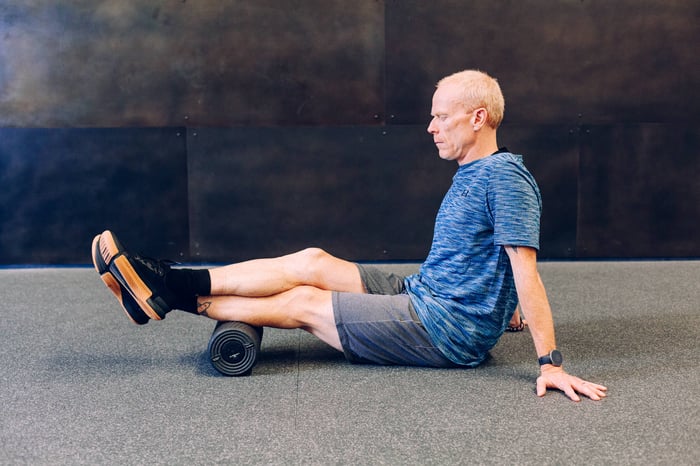
2. Glutes
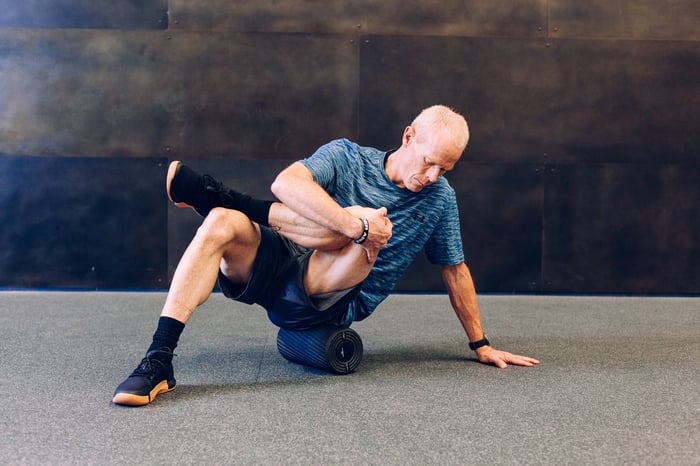
-
Hip Flexors
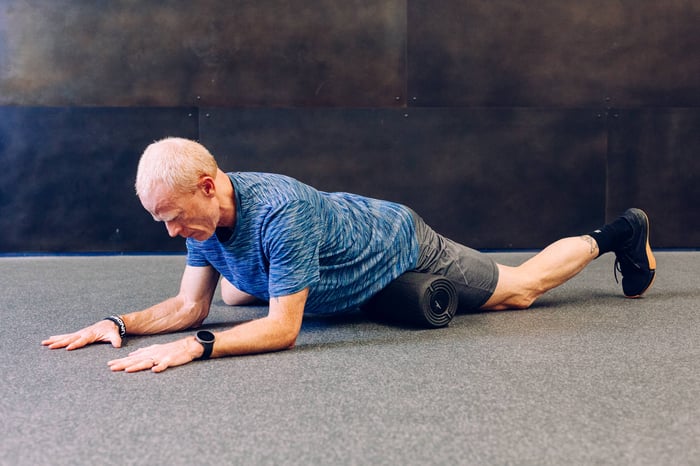
4. Thoracic spine
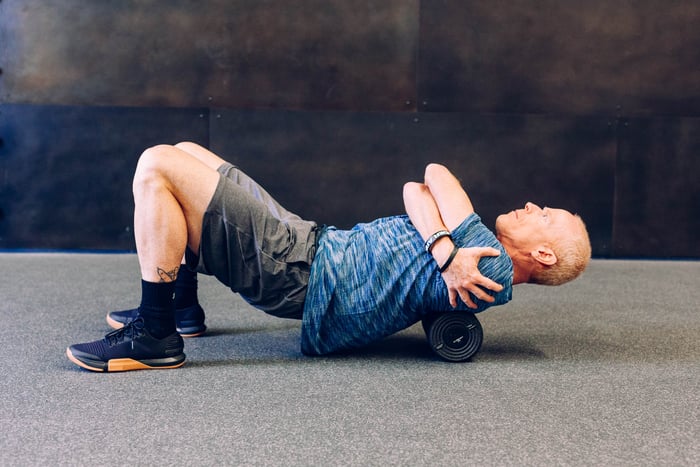
Foam Roll Again After a Run
- Calves
- Glutes
- Hip Flexors
- Quadriceps
- Thoracic spine
- Any other area where you might have tight muscles
Running Exercises Summary
All of these workouts can be performed independently and in conjunction with a strength training program or they could be combined together into one workout depending on how much time you have available. If you have the time, you could combine the workouts above in order 1 through 5 back-to-back in a circuit style workout. Take a 30 to 60 second rest and then repeat for two or three more times. Total time including a dynamic warm up would be ~ 30 minutes.
Aside from what is recommended above, you know your body best! Listen to your body and let that guide you. For specific individual needs, consulting a Coach will always lead to the best results. A Coach can design a specific program base on how you move and the sport that you love to play!

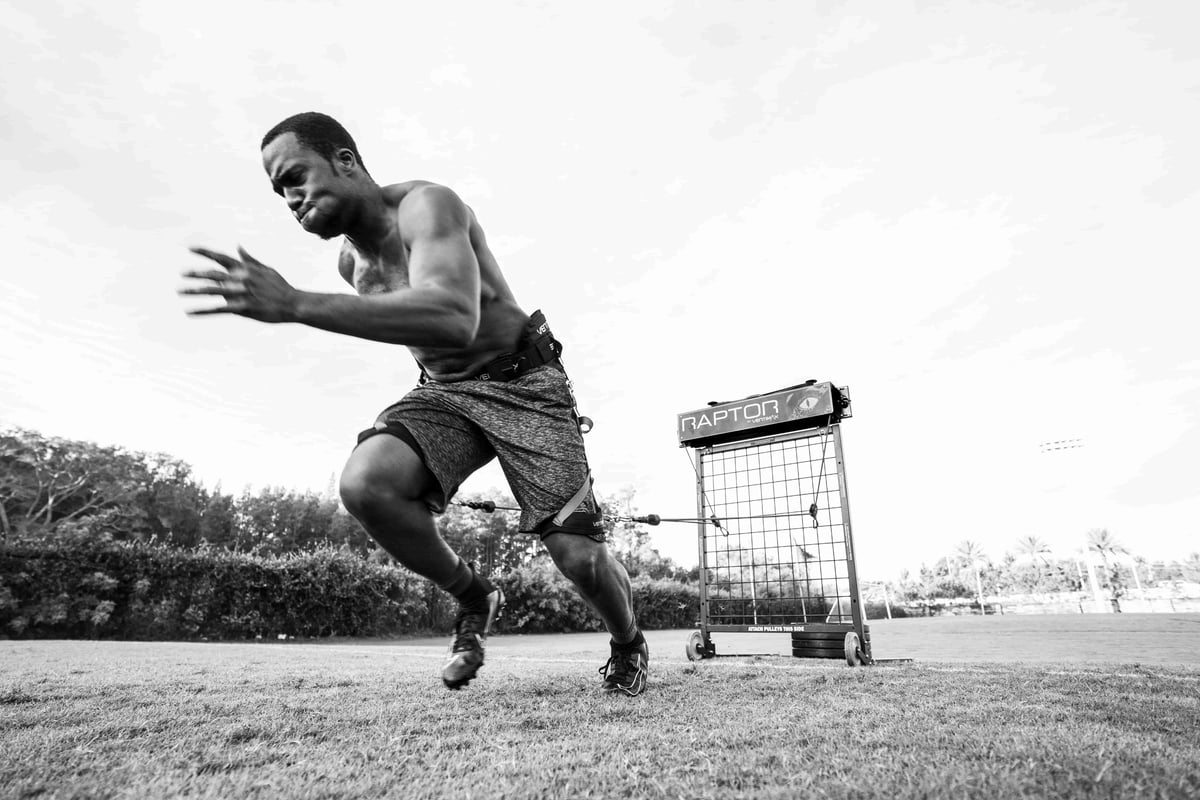
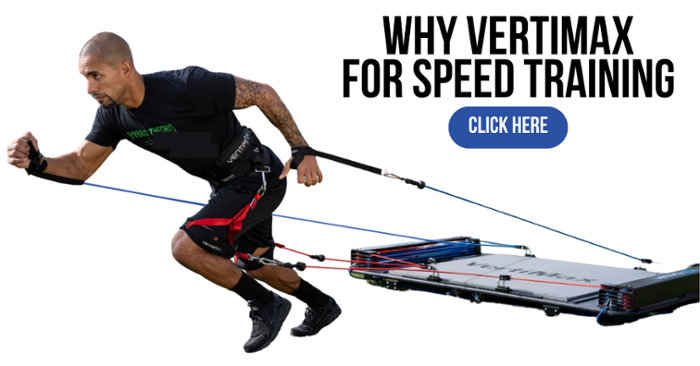


.png?width=110&name=Listing%20Image-basketball%20ladder%20drill%20%20(350%20x%20350%20px).png)
